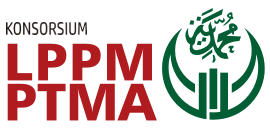Risk Factor Analysis of Maxillary Sinus as Sinusitis with The Highest Incidence
DOI:
https://doi.org/10.53017/ujhs.242Keywords:
Paranasal sinus, Maxillary Sinus, Sinusitis, Risk FactorsAbstract
Sinusitis is an inflammatory disease of the paranasal sinus cavities that can be caused by infection, allergies, or autoimmune problems, and is a disease that is often found in everyday medical practice and is even considered one of the most common causes of health problems in the world. Epidemiologically, the maxillary sinuses are most commonly affected, then the ethmoidal, frontal, and sphenoidal which are included in the acute sinusitis section. The purpose of this literature review is to collect and synthesize articles describing the maxillary sinus as sinusitis with the highest incidence and to find out the underlying risk factors. This literature review method is done by searching for references in databases and search engines with keywords and then synthesizing the results in the form of a narrative. The results we get can be concluded that the maxillary sinus is the most frequently infected paranasal sinus due to various factors such as the size of the paranasal sinus being the largest, the location of the ostium being higher than the base, the ostium located in the meatus medius, around the hiatus semilunaris which is narrow so it gets easily blocked, and The maxillary sinus is the base of the tooth root (alveolar process) so that dental infection can cause odontogenic maxillary sinusitis in adulthood.
Downloads
References
L. Lalita, O. I. Palandeng, O. C. P Pelealu, K. Skripsi Fakultas Kedokteran Universitas Sam Ratulangi Manado, and S. R. Telinga Hidung Tenggorok-Bedah Kepala Leher Fakultas Kedokteran Universitas Sam Ratulangi -RSUP D Kandou Manado, “Kesehatan hidung di Sekolah Polisi Negara Karombasan Manado,” 2016.
M. Mustafa, P. Patawari, S. C. Shimmi, and S. S. Hussain, “Acute and Chronic Rhinosinusitis, Pathophysiology and Treatment,” Online, 2015. [Online]. Available: www.ijpsi.org30|
D. Soetjipto, E. Mangunkusumo, and R. S. Wardani, Hidung dalam: Soepardi E, Iskandar N, Bashirudin J, Restuti RD. (Eds). Buku Ajar Ilmu Kesehatan Telinga Hidung Tenggorok Kepala dan Leher, 6th ed. Jakarta: Balai Penerbit FK UI, 2007.
E. A. Soepardi, N. Iskandar, and R. D. Restuti, Sinus Maksilaris dalam: Buku Ajar Ilmu Kesehatan Telinga Hidung Tenggorokan Kepala & Leher, 7th ed. Jakarta: Balai Penerbit FK UI, 2016.
A. S. Alsaied, “Paranasal Sinus Anatomy: What the Surgeon Needs to Know ,” IntechOpen, pp. 1–35, Apr. 2017.
W. Walsh and R. Kern, Sinonasal Anatomy, Function, and Evaluation. Philadelphia: Lippincott WilliamsWilkins, 2006.
R. Leung, W. Walsh, and R. Kern, Sinonasal anatomy and physiology. In: Ferguson BJ, Ryan MW, eds. Bailey’s Head and Neck Surgery Otolaryngology, 5th ed. Philadephia: Lippincott Williams & Wilkins, 2014.
K. Ganesan and N. Rathod, Maxillary Sinusitis in: Oral and Maxillofacial Surgery for the Clinician. Chennai: Springer, 2021.
G. Psillas, D. Papaioannou, S. Petsali, G. G. Dimas, and J. Constantinidis, “Odontogenic maxillary sinusitis: A comprehensive review,” Journal of Dental Sciences, vol. 16, no. 1. Association for Dental Sciences of the Republic of China, pp. 474–481, Jan. 01, 2021. doi: 10.1016/j.jds.2020.08.001.
T. S. Lee, R. Kellman, and A. Darling, “Crumple zone effect of nasal cavity and paranasal sinuses on posterior cranial fossa,” Laryngoscope, vol. 124, no. 10, pp. 2241–2246, Oct. 2014, doi: 10.1002/lary.24644.
H. L. Sieron et al., “Function and physiology of the maxillary sinus,” HNO, vol. 68, no. 8. Springer Medizin, pp. 566–572, Aug. 01, 2020. doi: 10.1007/s00106-020-00869-2.
Downloads
Published
How to Cite
Issue
Section
License
Copyright (c) 2024 Iwan Setiawan Adji, Farha Nabila Widoningrum

This work is licensed under a Creative Commons Attribution-NonCommercial 4.0 International License.





